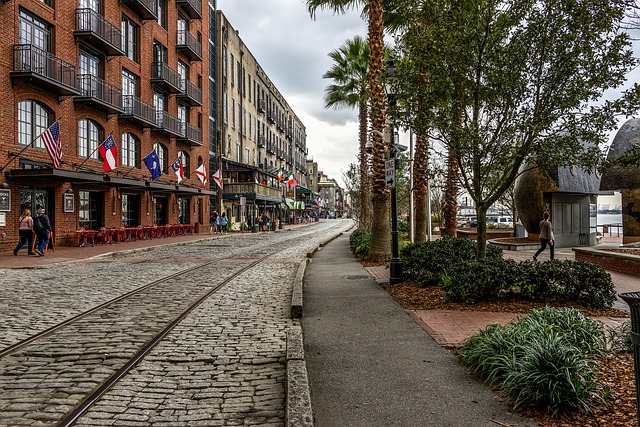By Tim Lambert
Early Georgia
Before Europeans arrived the Cherokee lived in northern Georgia. The Creek lived further south. The first European to visit the area was a Spaniard named Hernando de Soto in 1540. In 1566 the Spanish settled on St Catherine Island. However, after the English attacks, the Spanish abandoned their settlements.
Then in 1732, the British created a colony in Georgia. King George II granted the land between the Savannah and Altamaha Rivers for a new colony (it was named after him). A man named James Oglethorpe also hoped the poor could be given a second chance if they settled in the new colony. But Georgia was also intended to be a buffer state to protect the Carolinas from the Spanish in Florida.
The first English settlers arrived on a ship called the Anne on 12 February 1733 led by Oglethorpe. They founded Savannah. In 1736 Oglethorpe founded Fort Frederica. In 1742 the Spanish attacked Georgia but were defeated at the Battle of Bloody Marsh.
In the late 18th century the population of Georgia grew rapidly. In 1777 it gained its first constitution. However, on 29 December 1778, the British captured Savannah. The siege of Savannah happened in 1779. French and American forces tried but failed to capture the town. However, the British evacuated Savannah in July 1782.
On 2 January 1788, Georgia became the 4th state to ratify the US Constitution.
In 1795 came the Yazoo Land Fraud. The state of Georgia claimed land in what is now the state of Mississippi (They were called the Yazoo lands because of the River Yazoo which flows through the area). State legislators were bribed to sell the land very cheaply. There was public outrage and in 1796 after elections, the legislature rescinded the act and invalidated the sale. However, the land companies had already sold much of the land, making large profits. The people who had bought land refused to give up their claims. In 1802 Georgia ceded the Yazoo lands to the US government. However, the issue was not settled till 1814 when the US government paid substantial amounts of money to the claimants.
Georgia in the 19th Century
In 1829 there was a gold rush in Georgia but the economy was heavily dependent on cotton. It also depended on slavery. Civil War began the following year. On 19 January 1861, Georgia ceded from the union.
However, in 1864 a Unionist army entered Georgia. They captured Atlanta on 2 September 1864 and burned the city in November. Sherman then began his march to the sea. He captured Savannah on 21 December 1864. After the Civil War ended in 1865 Georgia slowly recovered. In 1867 it was placed under military rule but in 1870 it was readmitted to the Union.
Modern Georgia
In 1908 most African Americans in Georgia were disenfranchised. There were also many lynchings in Georgia in the late 19th and early 20th centuries. Then in 1915, the boll weevil reached the state and it devastated cotton production. The Depression of the 1930s made economic problems worse.
But prosperity returned with the Second World War. After the war, Georgia became industrialized. Georgia became a center of the airline industry.
In the 1960s segregation ended and African Americans gained the vote. In 1973 Maynard Holbrook Jackson Jr became the first African-American mayor of Atlanta. In 1976 Jimmy Carter, a former governor of Georgia was elected president.

In the early 21st century service industries made up the largest part of the Georgian economy. Georgia is known for growing peanuts, cotton, and peaches. In 2021 the population of Georgia was 10.8 million.
Last revised 2025